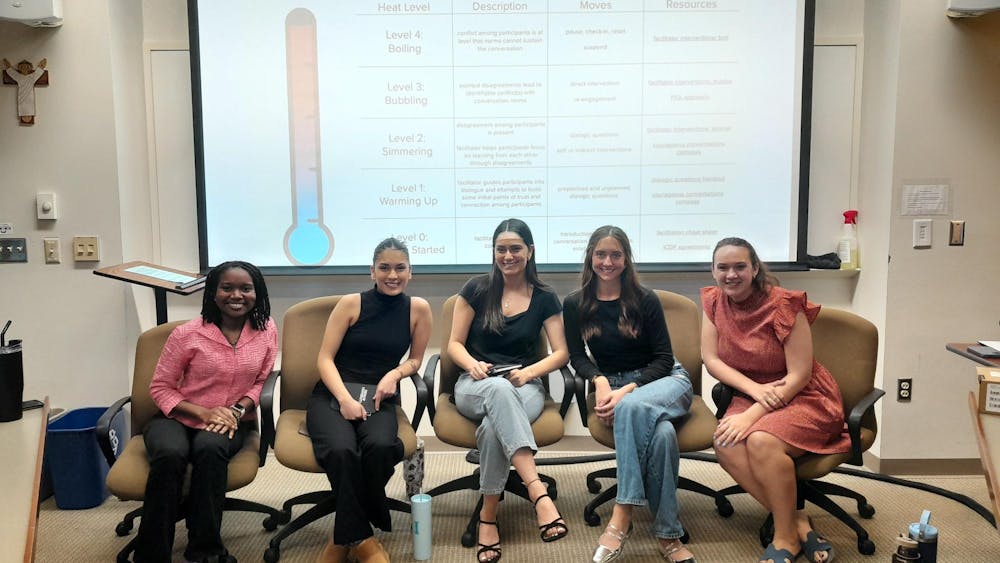Tests to diagnose heart attacks currently take hours to get back, causing patients with symptoms of heart attacks to have to wait for the test results before they can receive appropriate treatment. A group of researchers from Notre Dame and the University of Florida working to address this issue have produced a device that is capable of diagnosing heart attacks in a matter of minutes.
The device the researchers produced is a sensor that helps differentiate between a heart attack and a reperfusion injury for patients that have already been admitted to the hospital. A reperfusion injury occurs when tissue is damaged during the restoration of blood flow to an organ or tissue following a heart attack or stroke.
The new device uses microRNA — also known as miRNA — technology, rather than protein-based biomarkers, for diagnosis. It can detect three distinct microRNAs that are found in the plasma in the blood.
Chemical and biomolecular engineering professor Pinar Zorlutuna helped lead the development of the sensor. She said microRNAs help differentiate between different phases of heart disease because they are developed by cells at distinct stages of disease progression.
Normally, microRNAs are detected using PCR technology. The group’s sensor avoids that step, Zorlutuna said.
“The PCR is not a fast test, while a heart attack patient needs to be diagnosed as quickly as possible,” Zorlutuna said.
Professor of chemical and biomolecular engineering Hsueh-Chia Chang helped lead the project as well. He said it is very common for patients recovering from heart surgery to die of reperfusion injury, which the device can quickly detect.
“So speed is the essence because you have somebody that’s either … right there on the surgery table or recovering from surgery and you want to know whether it’s another heart attack,” Chang said.
When using the PCR technology, it is difficult and time-consuming to extract molecules from the blood of patients, send them into a lab and wait for them to be identified, Chang said.
Satyajyoti Senapati, associate research professor of chemical and biomolecular engineering, also participated in the research. He said a major benefit of this new technology is that it is inexpensive.
“This whole chip can be very cheaply mass produced simply by injection molding or 3D-printing process,” Senapati said.
Zorlutuna said the sensor is designed to be used in both hospital emergency rooms and in home settings for patients who experience heart problems.
Because the device is cost-efficient and portable, the researchers hope it can be used in developing countries.
The team is in the process of applying for a patent for the sensor. Chang said it will likely take approximately 5 years to receive FDA approval and get the device in use.
“There has to be a major clinical trial,” Chang said. “So, at that point, I think a company will have to run with it because you need to have companies that will make the devices.”
Zorlutuna cited a variety of benefits of this new device, including improved patient diagnostics, reduced cost of being admitted to the emergency room and improved patient outcomes.
“It can improve the patient outcomes because it can detect the heart attack faster and more precisely than the current methods, and also it can potentially distinguish between different stages of the heart attack,” Zorlutuna said.













